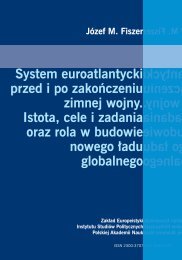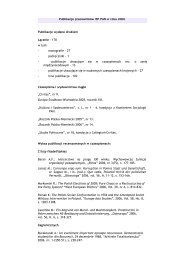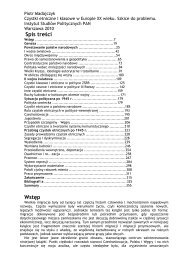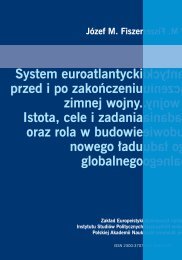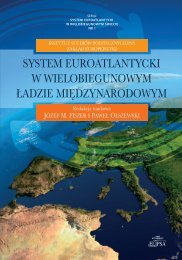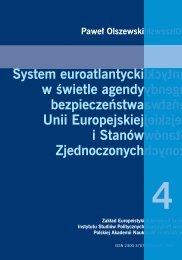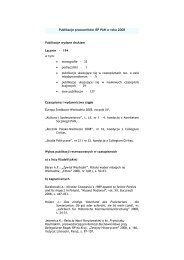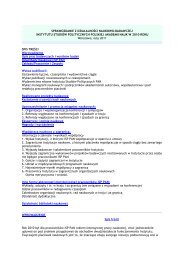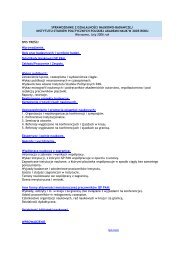Kultura i SpoÅeczeÅstwo t. 55 nr 4/2011
Kultura i SpoÅeczeÅstwo t. 55 nr 4/2011
Kultura i SpoÅeczeÅstwo t. 55 nr 4/2011
- No tags were found...
Create successful ePaper yourself
Turn your PDF publications into a flip-book with our unique Google optimized e-Paper software.
jaką rolę mogą pełnić obrazy przy formowaniu i zmienianiu wspólnot pamięci w epoceglobalizacji i dywersyfikacjiS u m m a ryThe Author starts with a thesis that photography and modern historiography developed at thesame time, and then tries to look for relationships between the two. He starts from analyzing aspecificity of a photograph which – as a medium – not only represents the past, but can be anenergizing impulse both in the presence and the future. By referring to the semioticclassification of Charles Senders Peirce, the Author describes the importance of a photographto historical research as an index, an icon and a symbol. This helps understand the way ofusing a collective resource of photographs and to define a status of digital photographs as asource. Finally, the Author tries to show the perspectives of visual history analysis and therole which might be played by images when forming and changing memory communities inthe era of globalization and diversification.Key words / słowa kluczowephotography / fotografia; history / historia; medium / medium; image /obraz; memorycommunity / wspólnota pamięciJerzy Mikułowski PomorskiAutor zastanawia się nad przemianami instytucji muzeum, traktując je jako medium. Bierzepod uwagę jego cechy konstutytywne: przestrzenność i pełnienie funkcji przekazu. Jegozdaniem, w dzisiejszym świecie konwergencji kultury muzea, niegdyś ograniczoneperspektywą instytucjonalną, skierowały uwagę na potrzeby i doświadczenia widza – stałysię ziemią, którą ludzie mogą zagospodarować według swych grupowych potrzeb.S u m m a ryThe Author ponders changes in the perception of the institution of museum, which he treats asa medium. He considers its constitutive features: spatiality and transfer function. In hisopinion, in the contemporary world of cultural convergence the museums, once limited withinstitutional perspective, targeted their attention at the needs and experiences of a viewer –they have become a piece of land which may be developed by people according to their owngroup needs.Key words / słowa kluczowecontermporary culture / kultura współczesna; museum / muzeum; medium / mediumZuzanna BogumiłThe Author examines the presentation of the German occupation at the Warsaw RisingMuseum and in Oskar Schindler’s Enamel Factory in Krakow. Initially, she studies the spaceof these exhibitions and demonstrates that the Warsaw Rising Museum has somecharacteristics of reflective space, while the exhibition at the Schindler's Factory is primarily aprojective one. Then, she points out that both museums treat artefacts as illustrations of theirstories, as a consequence of which they are simulations of the past rather than materialtestimonies of what had happened. Finally, the Author argues that the Warsaw RisingMuseum primarily tells the story of glory of the Polish nation, while the Schindler Factoryfocuses on the social history. In conclusion the Author points out that none of the exhibitions6



